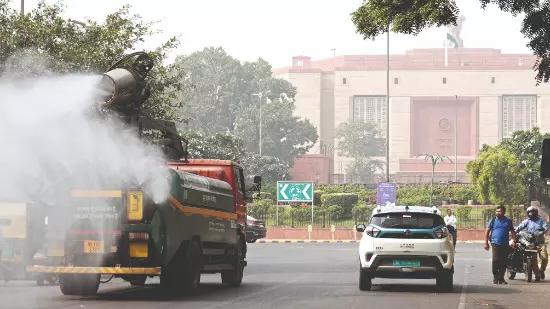NCAP 2.0: White paper by experts urges more focus on rural areas and PM 2.5

New Delhi: More than 58 organisations across India have jointly endorsed a white paper calling for a sharper, more accountable second phase of the National Clean Air Programme (NCAP), urging the government to widen its reach, strengthen monitoring and fix clear lines of responsibility to speed up air quality improvements.
The paper, titled “NCAP 2.0: Towards an Integrated Air Quality Framework for India”, asked for the next phase to move beyond the present focus on 130 non-attainment cities and adopt an airshed- and state-level approach that captures pollution sources across urban, peri-urban and rural areas.
The authors said air pollution crosses administrative borders and the programme must be redesigned to reflect that reality. India launched the National Clean Air Programme (NCAP) in 2019 with a target to reduce particulate pollution by 20-30 per cent by 2024, using 2017 as the base year. The target was later revised to a 40 per cent reduction by 2026, using 2019-20 as the base year.
In practice, only PM10 concentration is being considered for performance assessment.
The white paper said that a state-led hybrid institutional model would be more practical for immediate action, with state environment departments acting as nodal coordinators, pollution control boards handling large-scale and cross-cutting sources and urban local bodies continuing to lead city-level measures such as road dust control, waste management and greening.
This, the paper said, would reduce jurisdictional confusion and allow tailored plans based on each state’s pollution profile.
The authors said while India has more than 560 continuous ambient air quality monitoring stations and over 800 manual monitoring stations, many cities still rely on a single continuous monitor and rural coverage is negligible.
They called for a denser network using lower-cost sensors alongside existing continuous monitors, independent audits of monitoring sites and a hybrid system that tracks pollutants beyond PM10 and PM2.5 to ensure data reliability and transparency.
The authors said that NCAP 2.0 must shift its performance framework away from narrow outcome-only metrics such as the number of “good” air quality days. Instead, they recommend a composite set of indicators blending inputs, processes and outputs and stress measuring absolute reductions in PM2.5 concentrations alongside PM10.
Prepared by a group of air quality experts and backed by think tanks and environmental groups, including the Center for Study of Science, Technology and Policy, Centre for Research on Energy and Clean Air, WRI India and Asar, the paper urged linking budgetary allocations directly to sectoral and geographic pollutant reductions so that funding is tied to measurable results.
To make policy decisions evidence-driven, the white paper called for state-level emission inventories and scientific modelling to set realistic emission reduction targets and identify priority sectors. The paper also suggested staggered PM2.5 benchmarks, setting an annual target of 35 micrograms per cubic metre.



